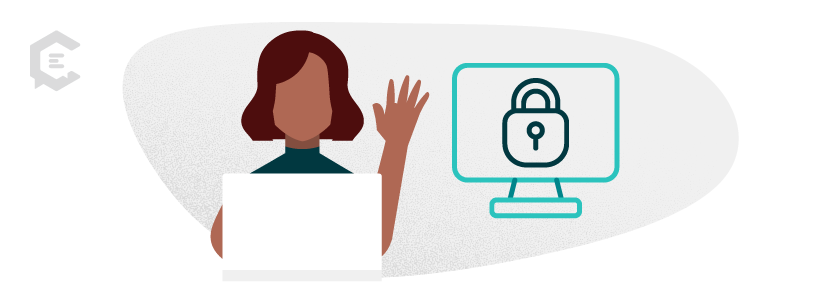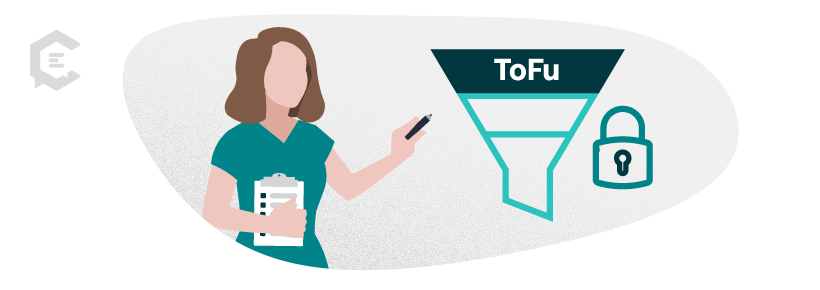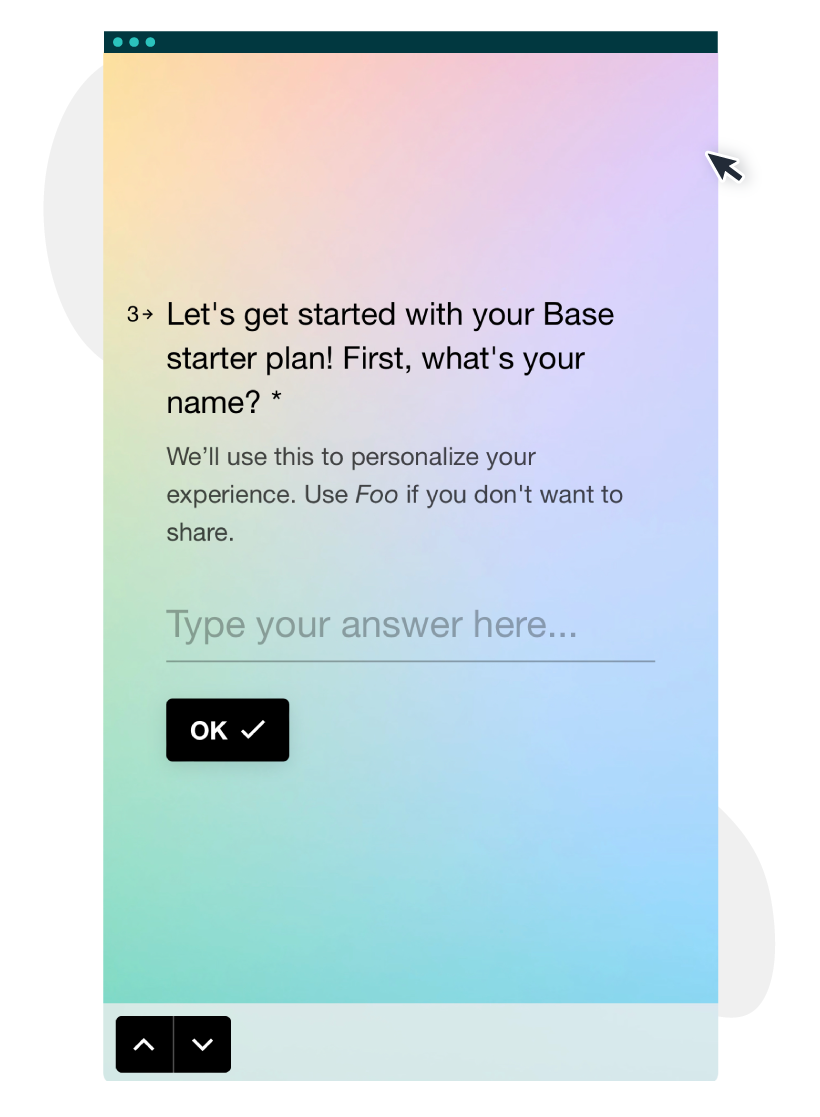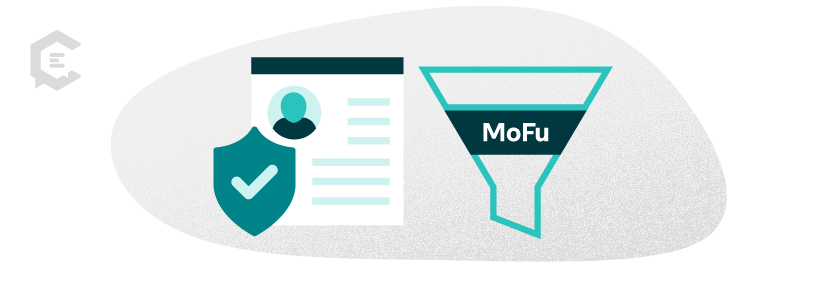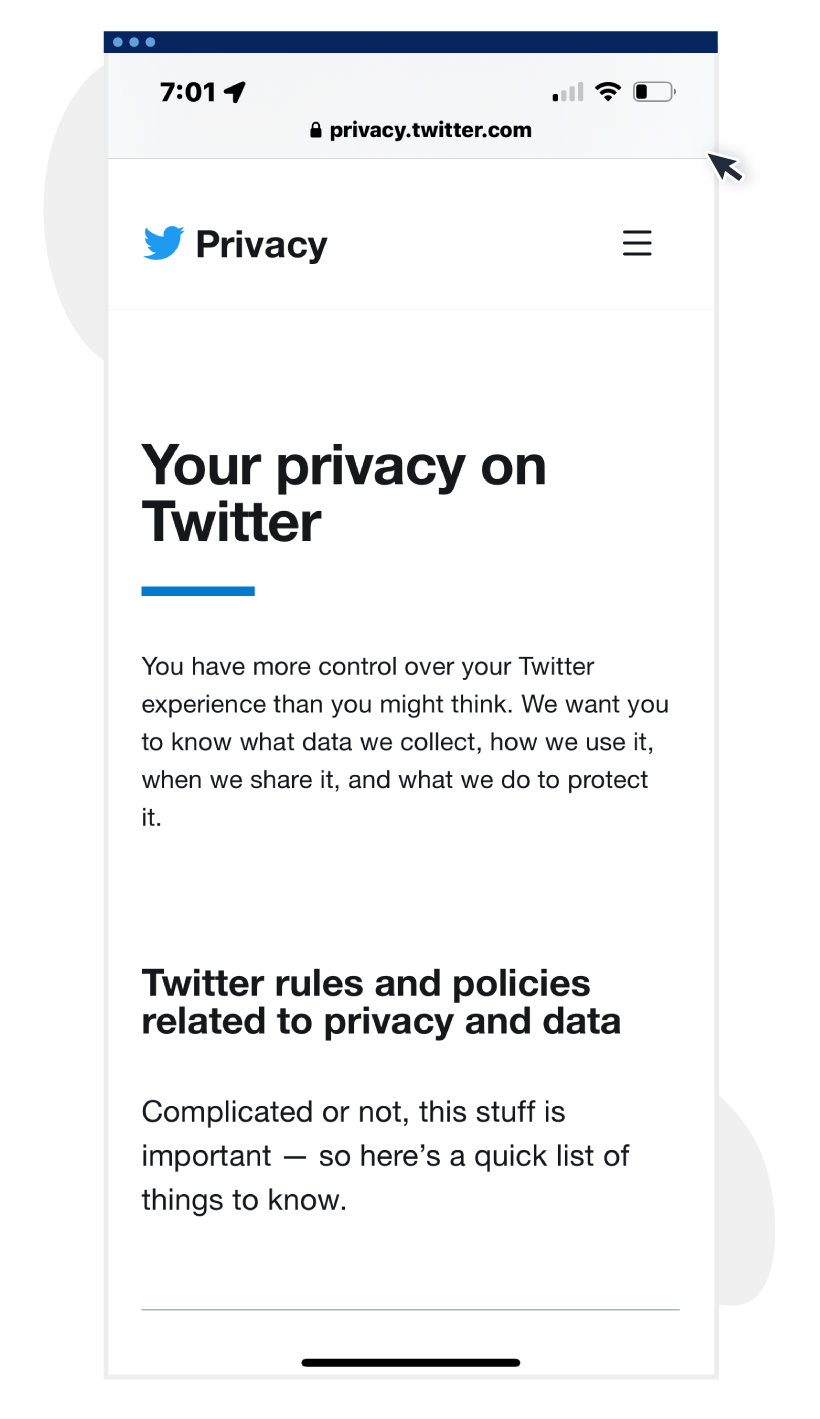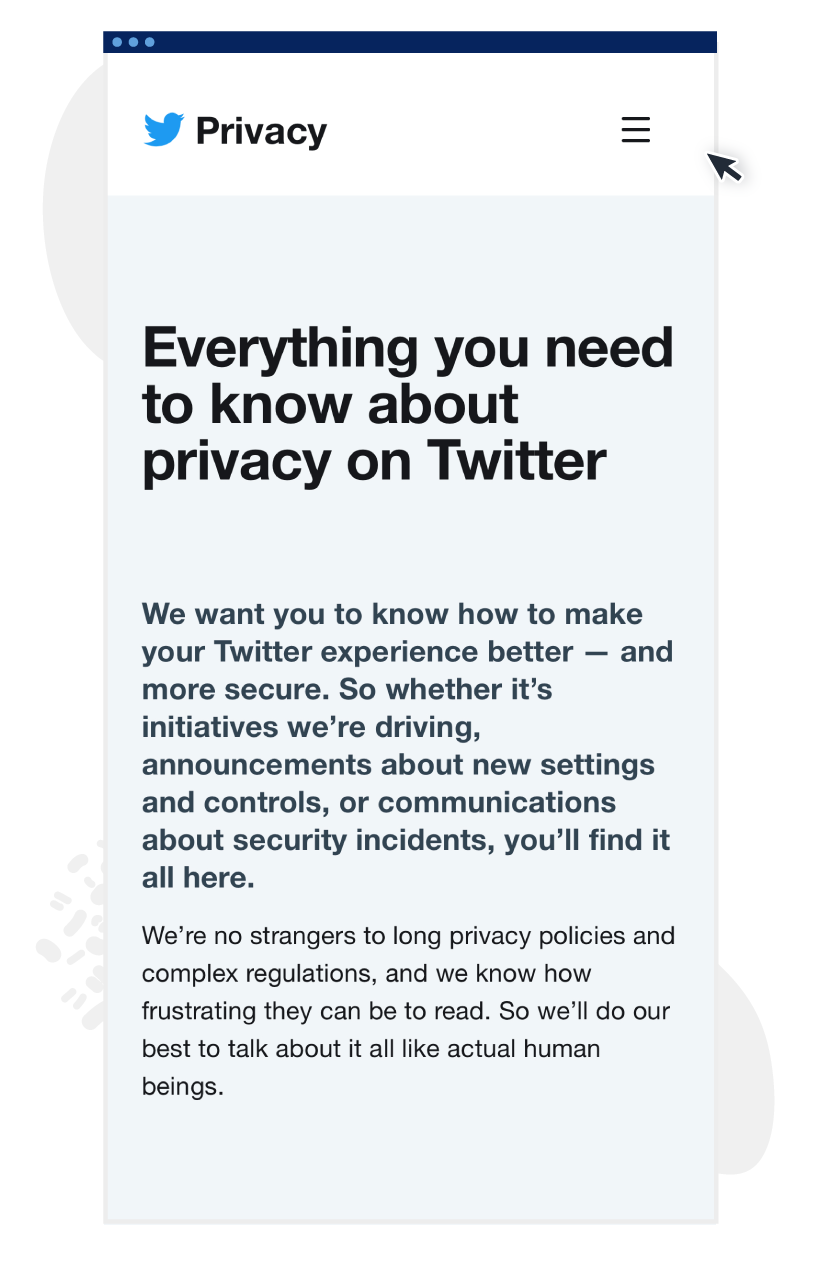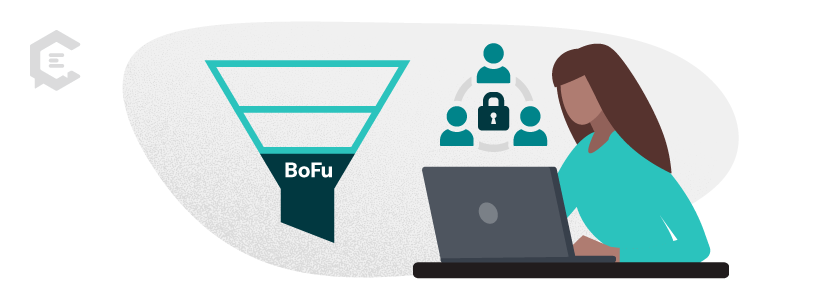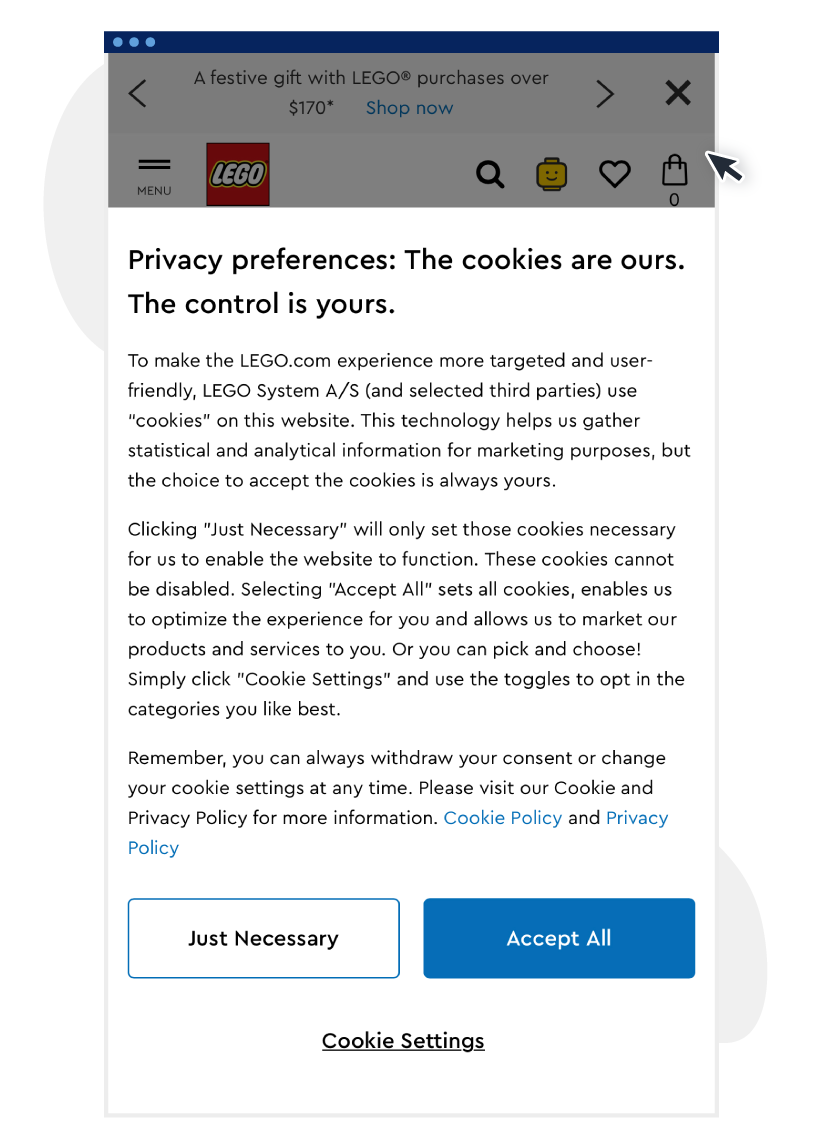Do you want your personal data taken without consent? No. And neither do your customers.
The rise of data privacy concerns for both brands and customers has created a chance to connect deeper with your audience. Gone are the days when online privacy was just a checkbox for legal teams at the end of content production. Now, it’s crucial to your overall content strategy.
And with that comes challenges. Namely, delivering compelling, impactful content while navigating evolving privacy regulations.
In this article, we’ll show you how user privacy can be a powerful opportunity to build trust and transparency around your brand. We’ll cover how it impacts content marketing, the strategic use of privacy content across all stages of the marketing funnel, and showcase brands that are succeeding at leveraging user privacy for audience connection.
Understanding User Privacy in Content Marketing
User privacy. Data privacy. User data. Personal information. What’s in a name? And more importantly, why should it matter to your content strategy? For a better understanding of how these terms are interconnected, consider this comprehensive privacy policy definition from a glossary compiled by the International Association of Privacy Professionals, or IAPP:
“[A privacy policy is] an internal statement that governs an organization or entity’s handling of personal information. It is directed at those members of the organization who might handle or make decisions regarding personal information, instructing them on the collection, use, storage, and destruction of the data, as well as any specific rights the data subjects may have. May also be referred to as a data protection policy.”
Taking the IAPP’s definition, one could argue that as a content creator:
- You are a member of an organization (be it a brand or agency)
- You handle personal information collected from users
- You may also make decisions about how that information is used
That doesn’t necessarily mean that you’ll be held personally responsible if privacy violations occur. But it does mean that you should be aware of how dependent your strategic work is on collecting data as users interact with the digital experiences you create and support.
Personalization vs. Privacy
Arguably, the biggest driving force behind that data collection is the rise in the importance of content personalization. Personalization has emerged as a powerful tool in content marketing. It allows you to tailor messaging and offers to individual’s specific preferences.
But it’s essential as a marketer to balance personalization with respect for user privacy. That means:
- Relying more on aggregated and anonymized data
- Ensuring that any personalization aligns with user consent
- Ethical data practices
- Privacy-first personalization
Finding the right balance between the two can lead to a more effective and ethically sound content strategy, ultimately driving stronger customer relationships.
Transparency = trust
Regarding relationships, today’s consumers want to know how their data is used. In a recent study, 60 percent of consumers who purchased something online cited “transparency” as the most important trait of a brand. Brands that provide clear, easily understandable privacy policies demonstrate they have nothing to hide, which creates trust. That trust, in turn, can lead to higher engagement and loyalty.
Bottom line, content marketers must incorporate privacy messaging in an informative and reassuring way rather than purposefully intimidating or confusing.
User privacy compliance
We’ve all witnessed the rise of AI this past year. With all the new emerging technology and its impact on all industries, it can feel frustrating trying to stay on top of new developments.
Unfortunately, those new developments, which include data collection, also mean monitoring evolving privacy regulations. To comply with all the current standards, you must implement robust data protection and privacy measures. That includes:
- Secure data processing
- Clear data consent protocols
- Timely responses to data access requests
Marketers must also stay agile and ready to adapt to new privacy legislation or updates to existing laws, which can vary significantly across regions and over time. That all may sound like a huge amount of work. However, it will reinforce your brand’s commitment to ethical data practices and prove to your audience that you take their data and privacy seriously.
The Strategic Use of Privacy Content
Using the parts of the marketing funnel as reference points, let’s look at user privacy in content marketing and how it might impact your work.
Then, we’ll check out a few examples from brands that have optimized privacy policy content with creative approaches.
Top-of-funnel marketing (TOFU)
Top-of-funnel marketing is the first stage of the journey and often the most critical step in building audience connection and demand generation. It’s also the phase where you establish trust. And with 4 out of 5 consumers saying they need to trust a brand before considering buying from it, establishing that trust is absolutely essential.
It’s also not just a one-way street. As marketers, we need customers to share their information with us so we can improve our targeting and messaging to deepen engagement.
TOFU user privacy example
Base is a brand that’s taking steps to establish trust while collecting personal information. Base makes all-in-one home health testing kits that provide users with information to improve their health. Users take a quiz designed to help them choose test kits that will give them actionable recommendations.
The first few questions on the quiz collect baseline information to learn what health concerns users want to improve. Then, before revealing which starter plan is the best, users are prompted to enter their names to make the experience more personal. And here’s where Base takes a privacy pivot. If you’re not ready to share your name, you can use “Foo” instead. So, there’s no pressure to share your name if you don’t want to.
Image source: get-base.com/quiz
The beauty of this experience is that you can continue anonymously until you’re ready to reveal who you are.
Middle-of-funnel marketing (MOFU)
At the middle-of-funnel marketing stage, consumers are more seriously considering what your brand is offering. And to nurture those leads effectively, you need to collect more detailed information. You don’t have them locked in just yet.
Since so few people read them, it may seem fruitless when it comes to being transparent about privacy policies. But, if you strategically craft them correctly, they can be the difference in closing the deal.
MOFU user privacy example
Social media brands are continually at the forefront of user privacy in content marketing conversations, and usually not for the best reasons.
There’s definitely a tradeoff between the expectation of privacy and sharing on social media. But some social media platforms are learning to do better by being more transparent.
Take Twitter (now X). It’s implemented a customer-centric approach to its privacy policies, removing legal jargon and replacing it with easy-to-understand, conversational language. It makes it something you can read and allows you to make informed decisions when interacting with their platform. They even walk you through adjusting your settings and provide a link on the page itself.
Image source: privacy.twitter.com/en
Image source: privacy.twitter.com/en
Plus, they’ve gone a step further and created Twitter Data Dash. A gamified experience — completely free of data collection — to help users understand privacy matters in a fun and engaging way.
Bottom-of-funnel marketing (BOFU)
You may think your work is done if you’ve used data-driven content strategies to guide users from the top of the funnel to the bottom. But at this point in the journey — the bottom-of-funnel marketing where decisions are made and conversions happen — privacy is critical to sealing the deal.
BOFU user privacy example.
Let’s say you’ve come across the most delightful LEGO succulents set (as you do), and it’s just what you need to complete your home office décor. After seeing the set on a third-party site, you decide to shop at the source to see if similar sets are available. Many online experiences present a generic-looking cookie policy banner (hello, banner blindness). That’s not the case with LEGO.com. They display a modal with a headline, “Privacy Preferences: The cookies are ours. The control is yours.”
Image source: Lego.com
Instead of wading through pages of privacy information to get to the cookie settings, you’re presented with three (relatively) short paragraphs. Followed by two buttons that allow you to make a quick, informed decision. And if you still need to go deeper into cookie settings, a tertiary call-to-action allows you to do so.
Polishing Your Privacy Policy
There’s no escaping the importance of user privacy in content marketing. Clear communication with users about how their data is collected and used is as important to content strategy as research, audience segmentation, voice and tone, and SEO.
The last thing you want is your privacy policy to be why someone decides not to choose your business. Ultimately, everybody wins if your privacy policy clearly states what it means to users and how it impacts their experience with your brand — and bonus points if it further connects with them casually.
Whether you need help explaining your privacy policy to customers, creating high-quality content, or developing a strong content strategy, ClearVoice’s experts have you covered.
Discover our solutions or talk to a content specialist about your needs today.
